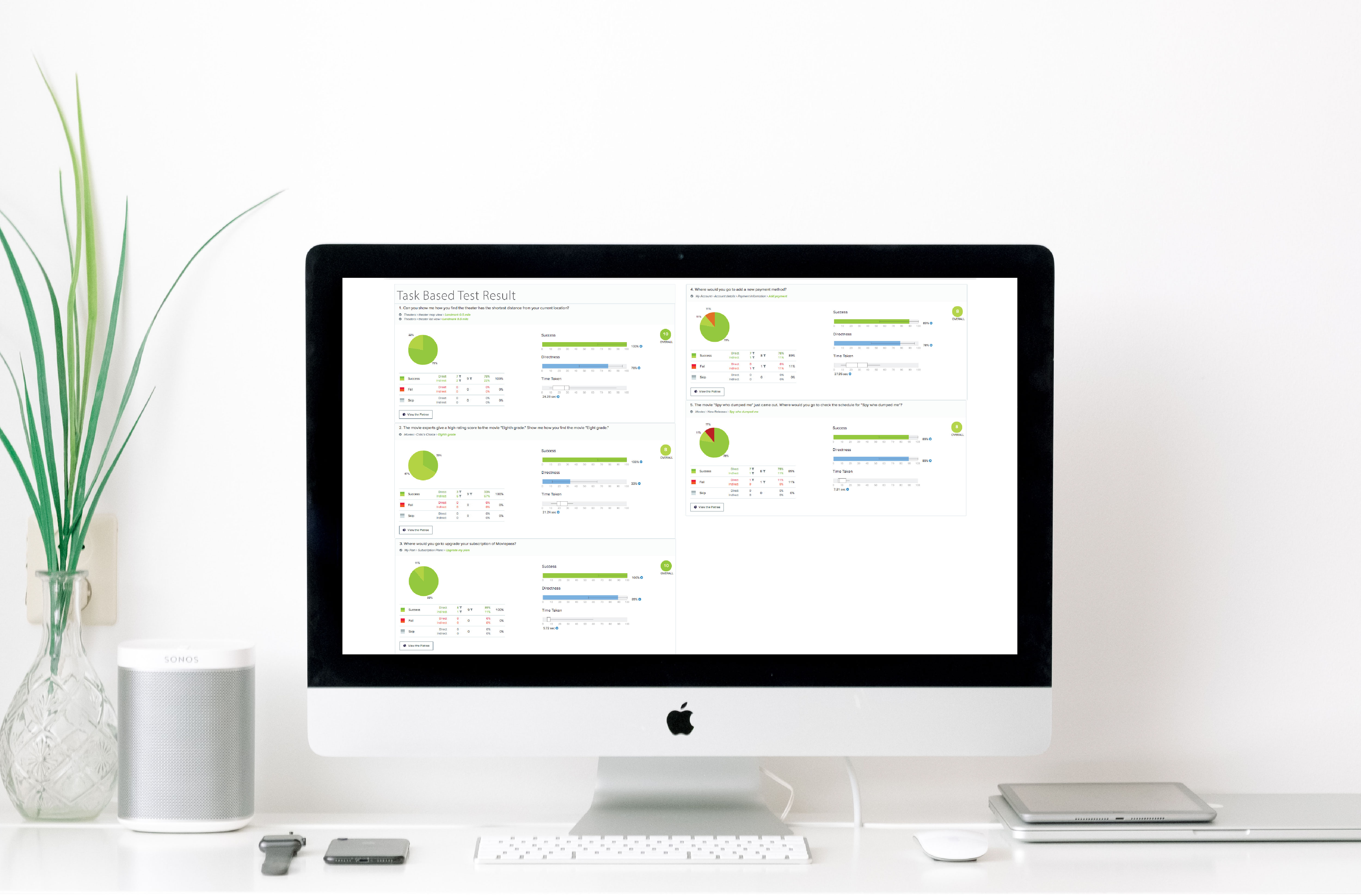


MoviePass is a subscription-based movie ticketing service priced at a reasonable monthly, quarterly, or annual fee. This service is popular among frequent moviegoers as a result, MoviePass has a wide user base of approximately 2 million users. Users can use the MoviePass application on their phone to check into a theater, select a movie and showtime. The cost of the ticket is then uploaded to a debit card, which is used to purchase physical tickets at the theater. From a usability perspective, however, this application has issues with its organizational structure. It is cumbersome to look for key information and conduct tasks. The goal was to improve the system experience so that users can seamlessly access movie-related information and conduct ticketing.

A heuristic evaluation was conducted to identify common usability issues with individual elements of the existing interface to determine how they impact the overall user experience.

The aim was to recreate a framework that is easy to navigate and enable users to access information nested under menu items. 15 participants were asked to sort 50 cards into 7 categories. The median time to complete the activity was 5.10 mins. Most of the cards received over 80% popularity in the consensus of categorization. This proved that the categories were matched well with the content. Users could successfully comprehend label and menu items.

To understand the user’s comprehension of the information presented on the new Sitemap, an Information Architecture Test was carried out using ‘Treejack’. Sitemap/content structure was presented to 9 participants who were asked to complete 5 tasks. 73% of the participants could complete the tasks in the first attempt and the task success rate was 100%. The median time taken to complete the test was 3.22 minutes, which proved that the paths were clear and well understood by users.

Based on the research conducted, a Sitemap was created in order to establish where key data resides within the application. Through the process of card sorting, key features were identified and used as menu items.

A wireframing designing sprint was then conducted to generate various options for key tasks such as 'Browsing movies' and 'Ticket purchasing'. From the options generated, the paths providing the best user experience in terms of task completion and number of steps were used. Wireframes were then created for 2 key tasks i.e. browsing a movie of choice and ticket purchasing.
The usability test revealed that most users were skeptical about trying out new theaters as they were not provided with enough information about it. Hence, the future scope of work involves incorporating theater reviews and ratings in the ‘Theater page’ to help users make an informed decision. Another suggestion received during the usability test was to expand the current filter function to incorporate different ways to filter movies i.e. filter by language and nationality to make the task of accessing a movie easier. Future scope of work would also involve providing information about ‘online’ vs ‘in theater’ ticket purchasing to state the difference between the two paths enabling users to understand how MoviePass works.